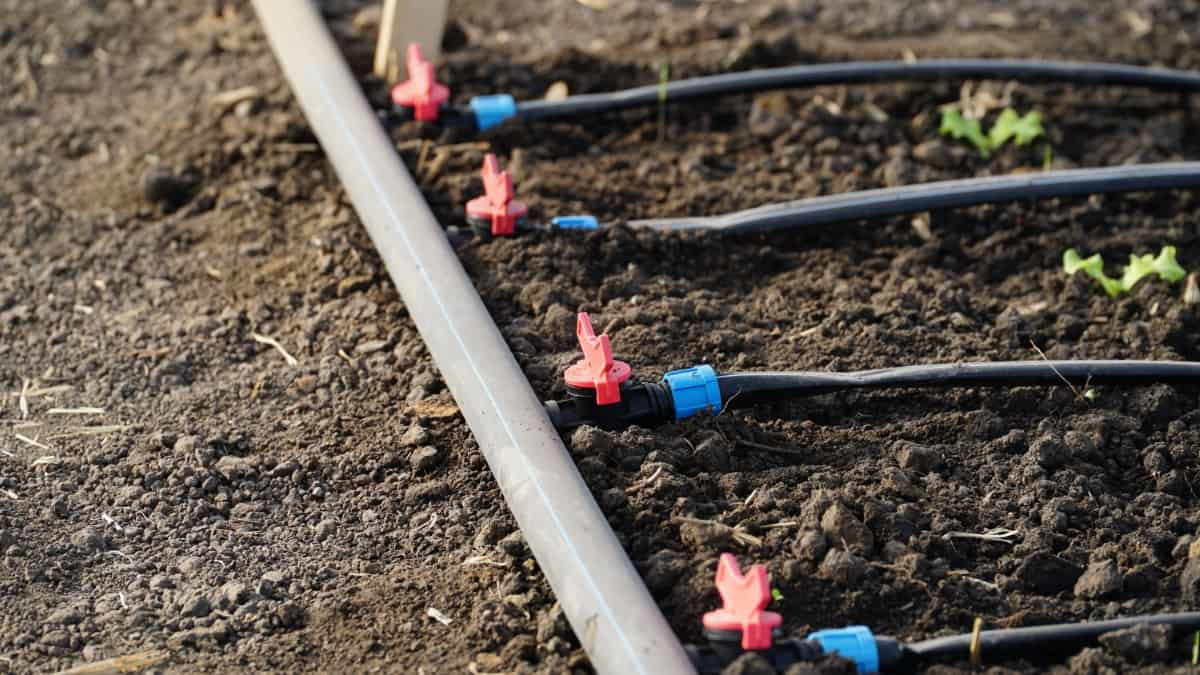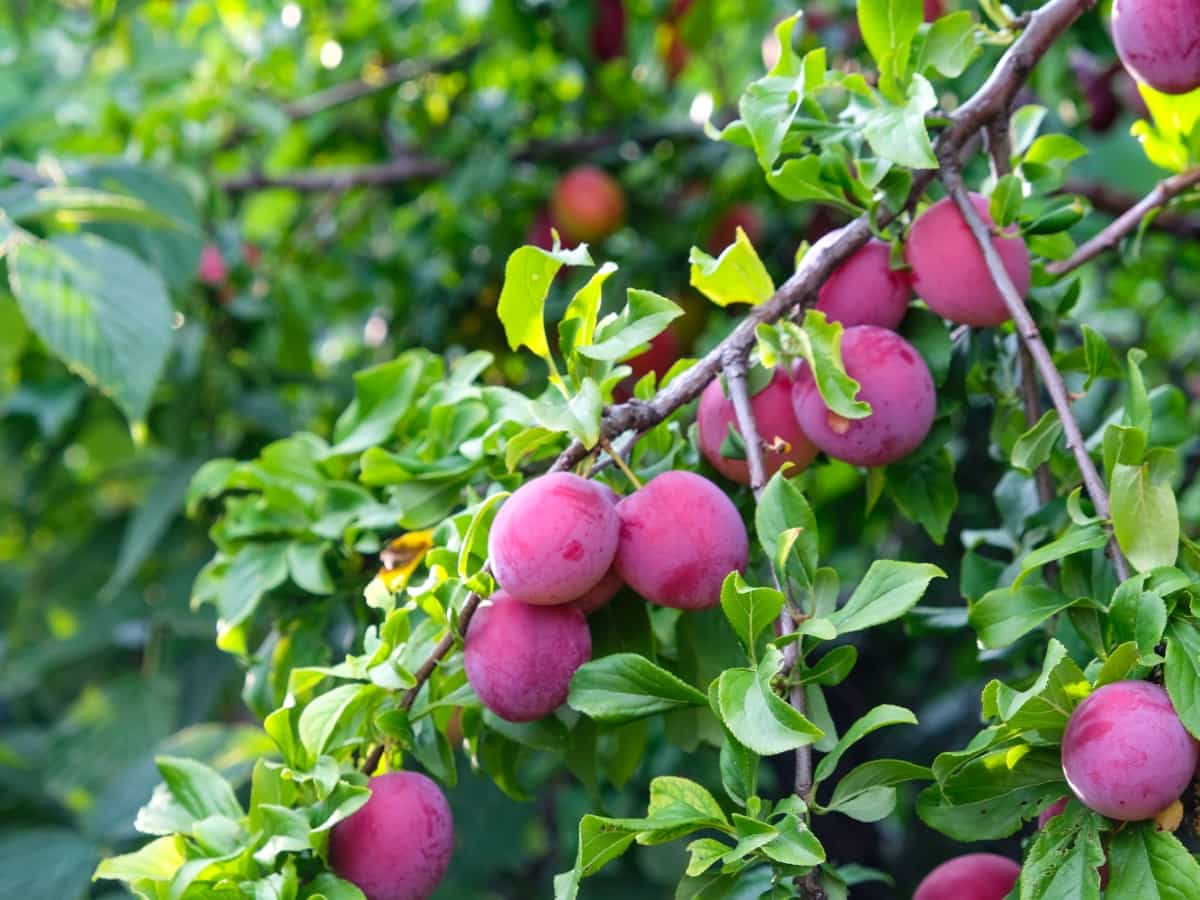Drip irrigation proves indispensable for optimizing water use in plum plantations, ensuring efficient nutrient delivery, and enhancing overall crop yield. This method, characterized by targeted water application directly to the plant roots, reduces wastage and fosters sustainable agricultural practices. In this exploration, we delve into the initial investment required for drip irrigation in plum fields, examining installation costs and potential subsidies.

Understand the Initial Investment for Drip Irrigation in Plum Plantation
The initial investment for drip irrigation in plum plantations involves several key components. The cost per acre typically includes expenses for drip lines, emitters, filters, pumps, and installation. In India, the average cost ranges from Rs. 1,40,000 to Rs. 1,80,000 per acre, depending on factors such as the size of the plantation and the type of drip system selected. While this initial investment may seem significant, it is vital to consider the long-term benefits, including water savings, improved yield, and resource efficiency.
Evaluate the Cost of Drip Lines and Emitters for Plum Fields
The cost breakdown of drip lines and emitters is a key aspect of assessing the financial implications for plum plantation owners. Drip lines, responsible for delivering water directly to plants, typically cost between Rs. 7,000 and Rs. 12,000 per acre. Emitters, which control the flow of water, come at an additional cost ranging from Rs. 5 to Rs. 15 per emitter, which costs around Rs. 8,000 to 13,000 per acre, depending on the type and quality.
Analyze the Expense of Filters and Pressure Regulators in Drip Irrigation Systems
Filters and pressure regulators are vital components in drip irrigation systems, playing a crucial role in ensuring the efficiency and longevity of the system. The cost of filters depends on factors such as the type and capacity, with prices ranging from Rs. 7,000 to Rs. 10,000 per acre. High-quality filters prevent clogging by removing impurities from the water safeguarding the emitters and drip lines.
Pressure regulators, essential for maintaining uniform water distribution, come at an additional cost of Rs. 8,000 to Rs. 10,000 per acre. These regulators stabilize water pressure, preventing damage to the system and ensuring optimal performance. While these expenses contribute to the upfront investment, they prove instrumental in protecting the overall integrity of the drip irrigation infrastructure, reducing maintenance costs, and enhancing the system’s reliability over time.
In case you missed it: Drip Irrigation Cost Per Acre for Mosambi: Exploring Installation Costs Along with Subsidy

Estimate the Cost of Automation and Control Systems in Drip Irrigation for Plum
Automation and control systems are integral for maximizing the efficiency of drip irrigation in plum plantations. The cost of these systems varies based on the level of sophistication and features. Basic automation systems, including timers and manual controllers, may range from Rs. 20,000 to Rs. 25,000 per acre.
For more advanced systems with sensors, weather-based controllers, and remote monitoring capabilities, the cost can escalate from Rs. 30,000 to Rs. 50,000 per acre. Despite the initial investment, these systems offer precise control over water delivery, optimizing irrigation schedules based on plant needs and environmental conditions.
Assess the Price of Pumps and Pumping Stations for Drip Irrigation in Plum Farming
The cost of pumps depends on factors like horsepower and water delivery capacity, ranging from Rs. 20,000 to Rs. 25,000 per acre. Additionally, the expense for a pumping station, including piping and installation, can vary from Rs. 10,000 to Rs. 15,000. Efficient pumps ensure a consistent and reliable water supply, contributing to the overall effectiveness of the drip irrigation system and subsequently influencing the plum crop’s yield and quality.
Explore the Cost of Fertilizer and Nutrient Injection Systems in Drip Irrigation for Plum Plantations
Integrating fertilizer and nutrient injection systems into drip irrigation proves essential for optimizing plum crop health. The cost of these systems ranges from Rs. 15,000 to Rs. 25,000 per acre. These systems enable precise delivery of fertilizers and nutrients directly to the plants, promoting efficient absorption and minimizing waste. While the initial investment is noteworthy, the long-term benefits include improved nutrient management, enhanced plum tree development, and increased fruit production.
Calculate the Labor and Installation Costs for Drip Irrigation in Plum Plantations
Installation expenses vary based on factors like land size, terrain, and system complexity, ranging from Rs. 18,000 to Rs. 25,000 per acre. Skilled labor is crucial for tasks such as trenching, drip line and emitter placement, and system setup, contributing to the overall installation cost. These expenses, while part of the initial investment, are pivotal for ensuring the proper working and longevity of the drip irrigation infrastructure. Farmers should carefully assess these costs to optimize the balance between upfront expenses and long-term benefits in water efficiency and crop yield.
In case you missed it: Drip Irrigation Cost Per Acre in Orange Plantation: Exploring Installation Costs Along with Subsidy

Factor the Maintenance and Repair Expenses for Drip Irrigation Systems in Plum Farming
Maintenance and repair costs are inherent considerations in the ongoing operation of drip irrigation systems for plum farming. On average, farmers can anticipate spending Rs. 5,000 to Rs. 10,000 per acre annually on routine maintenance, including system checks, cleaning filters, and replacing worn-out components. Additionally, unforeseen issues or damages may incur repair costs ranging from Rs. 8,000 to Rs. 10,000 per incident. Proactive maintenance is essential to prevent potential downtime and ensure the continuous functionality of the drip irrigation system.
Energy Costs Associated with Drip Irrigation in Plum Cultivation
Drip irrigation in plum cultivation incurs energy costs primarily related to pump operation. The energy consumption depends on pump capacity, hours of operation, and local electricity rates, averaging Rs. 10,000 to Rs. 12,000 per acre annually. Efficient pump selection, coupled with the use of renewable energy sources, can help mitigate these costs. Additionally, the precise water delivery of drip systems minimizes energy-intensive processes compared to traditional irrigation methods, contributing to overall energy savings and environmental sustainability in plum farming.
Drip Irrigation Cost Per Acre for Plum Plantation
| Item | Cost Range (INR) |
| Drip Lines & Emitters | 15,000-20,000 |
| Filters and Pressure Regulators | 15,000-25,000 |
| Automation and Control Systems | 20,000-25,000 |
| Pumps and Pumping Stations | 30,000-35,000 |
| Fertilizer and Nutrient Injection Systems | 15,000-25,000 |
| Labor and Installation Costs | 18,000-25,000 |
| Maintenance and Repair Expenses | 13,000-20,000 |
| Energy Costs | 10,000-12,000 |
Government Subsidy for Plum Drip Irrigation
Government subsidies play a pivotal role in promoting sustainable agriculture, particularly in the context of plum drip irrigation. Plum farmers can benefit from subsidies covering up to 45-55% of the total installation cost under the PDMC component in the PMKSY scheme. These government subsidies aim to promote the adoption of efficient irrigation systems, reducing water wastage and fostering environmental sustainability. The support provided by government subsidies not only eases the financial burden on farmers but also facilitates the widespread implementation of water-efficient practices, ultimately contributing to enhanced crop productivity and the overall economic viability of plum cultivation.
Compare the Overall Operational Costs of Drip Irrigation vs. Traditional Methods in Plum Farming
When comparing the overall operational costs, drip irrigation offers a compelling advantage over traditional methods in plum farming. While the initial investment in drip systems may be higher, the long-term operational efficiency and resource savings result in a favorable cost-benefit ratio. Drip irrigation minimizes water wastage, reducing pumping energy costs by up to 30-35% compared to traditional flood or furrow methods.
Labor costs are optimized through automated systems, ensuring precise water and nutrient delivery. Maintenance expenses, though present, are generally lower due to reduced wear and tear. The increased yield, improved fruit quality, and potential government subsidies further enhance the economic viability of drip irrigation. In the context of plum farming, the overall operational costs favor the adoption of drip irrigation, promoting sustainable and economically sound agricultural practices.
In case you missed it: Drip Irrigation Cost Per Acre for Custard Apple: Exploring Installation Costs Along with Subsidy

Conclusion
In conclusion, the cost analysis of drip irrigation for plum plantations underscores the significance of the initial investment, encompassing components like filters, pumps, and automation systems. While installation costs may seem substantial, potential government subsidies and long-term benefits, including water efficiency and increased yields, make drip irrigation a strategic and economically viable choice.
- Feed Your Flock for Less: Top 10 Tips to Save on Chicken Feed
- Ultimate Guide to Ossabaw Island Hog: Breeding, Raising, Diet, and Care
- Hatching Answers: The Top 10 Reasons Your Chickens Aren’t Laying Eggs
- Eggs and Economics: Breaking Down the Cost of Raising Backyard Chickens
- Defend Your Greens: Proven Methods to Keep Iguanas Out of Your Garden
- Ultimate Guide to Cinnamon Queen Chicken: A Comprehensive Guide for Beginners
- Ultimate Guide to California Tan Chicken: Breeding, Raising, Diet, Egg-Production and Care
- Ultimate Guide to Marsh Daisy Chicken: Breeding, Raising, Diet, and Care
- 10 Types of Chicken Farming Businesses You Can Start for Profits